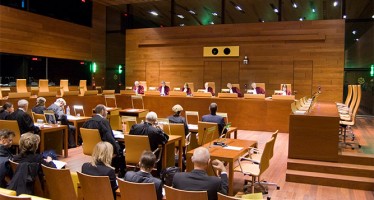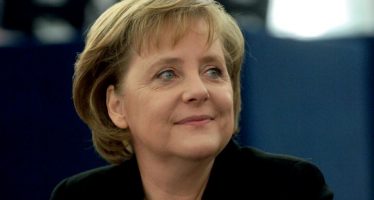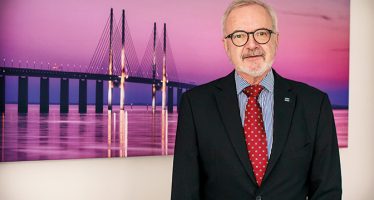Paris-based Powerhouse Île-de-France: Leading the Way for Local Authorities
The region’s president, Valérie Pécresse, is gunning for nothing less than 100 percent when it comes to sustainable debt.
Île-de-France Region is one of Europe’s leading local authorities, powered by economic dynamism and innovation.
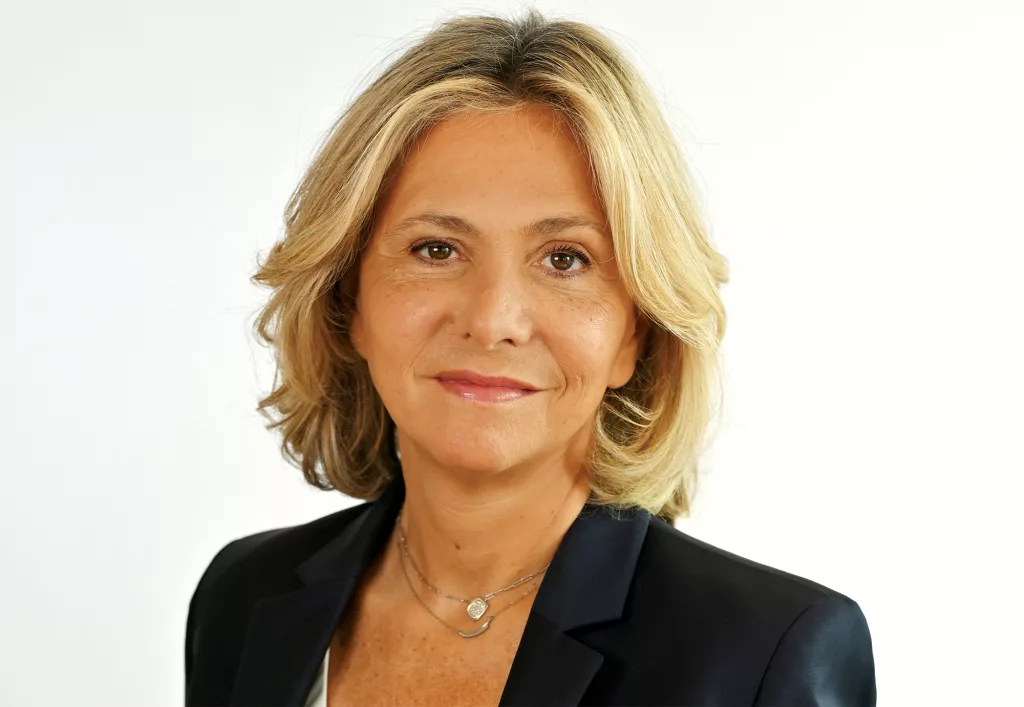
President: Valérie Pécresse
With a GDP of €764bn in 2023, the Parisien region is a major economic and financial centre, boasting Europe’s highest concentration of head offices of the world’s 500 largest companies.
For the past 12 years, the region has been focused on developing green and responsible finance for the benefit of its 12 million inhabitants. That comes via transport infrastructure, education facilities, and vocational training. The regional council, with a total of 10,300 staff members, is structured around 209 elected representatives, presided over since 2015 by Valérie Pécresse.
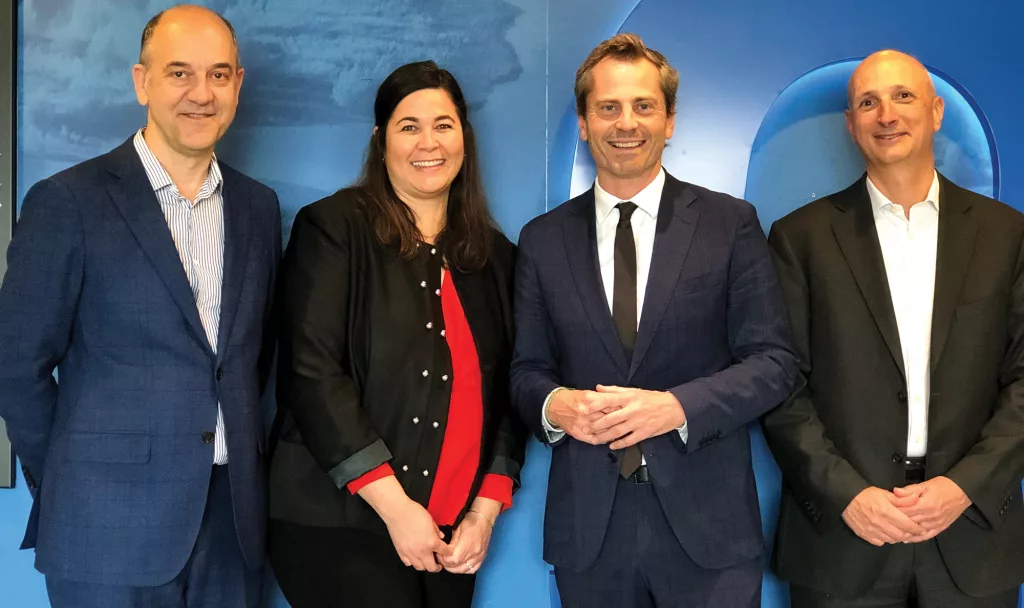
Team: Manuel Thomas, Loanah Derue, Paul Berard, Franck Lavergne.
Since 2012, green financing has enabled the development of around 150 projects worth €6.5bn. Île-de-France is a leading presence in the field, committed to environmentally and socially responsible investment.
This focus is reinforced by the pursuit of innovative, responsible finance solutions. Île-de-France Region plays a central role in promoting and harmonising sustainable practices across Europe, and is lead partner of the European Interreg GreenGov programme.
The overriding goal is to do no harm, and the programme aims to better that by improving the governance and financing of socially responsible investments.
A four-year inter-regional consultation will enable European regions to share knowledge on supranational regulations and, ultimately, ensure their local implementation. Two main systems are concerned: the DNSH of the European green taxonomy, already integrated into the region’s transport sector, and climate-proofing, which promotes and enhances infrastructure resilience.
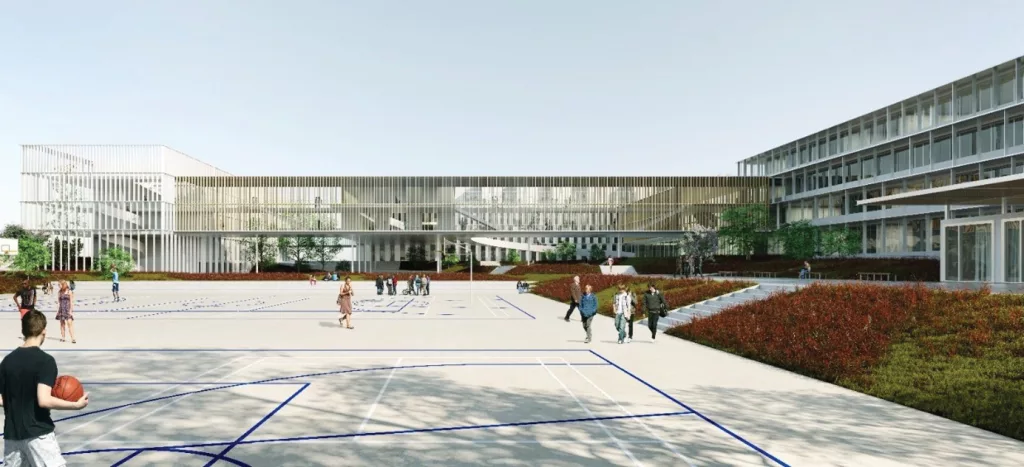
High school project funded by regional sustainable issuance – Louise Michel and Langevin-Wallon (Champigny-sur-Marne).
“I am convinced that Île-de-France’s extraordinary success is due to the solid green, social and sustainable bond framework,” says Pécresse, “and our clear annual reports detailing the allocation and impacts of our socially responsible investments.”
The region’s strong financial ratios, with a projected debt-repayment ratio of six years and a gross savings forecast of 26 percent, reflect prudent financial management.
In January 2024, Île-de-France Region carried out its largest-ever bond issue, for €800m – under its green, social and sustainable framework, bien sur. With a yield of 3.2 percent over a 10-year maturity, this transaction underscores the region financial strength.
In 2023, 91 percent of the region’s outstanding debt was sustainable. “The objective, before the end of my mandate,” says Pécresse, “is a 100 percent sustainable debt.”
As the next step, Île-de-France Region, in collaboration with an auditing firm, produced an ex-post impact report to assess the medium- and long-term effects of regional investments. The report enabled a new practice to be adopted by all issuers in the interests of transparency – and deliver positive results in the fight against climate change.
“Now, more than ever, is the time to evaluate public policies,” says Pécresse. “The region has a large scope of sustainable development responsibilities, as you can see in our bond issuance reporting.”
The allocation of the 2022 sustainable issue (most recent report – illustration below).
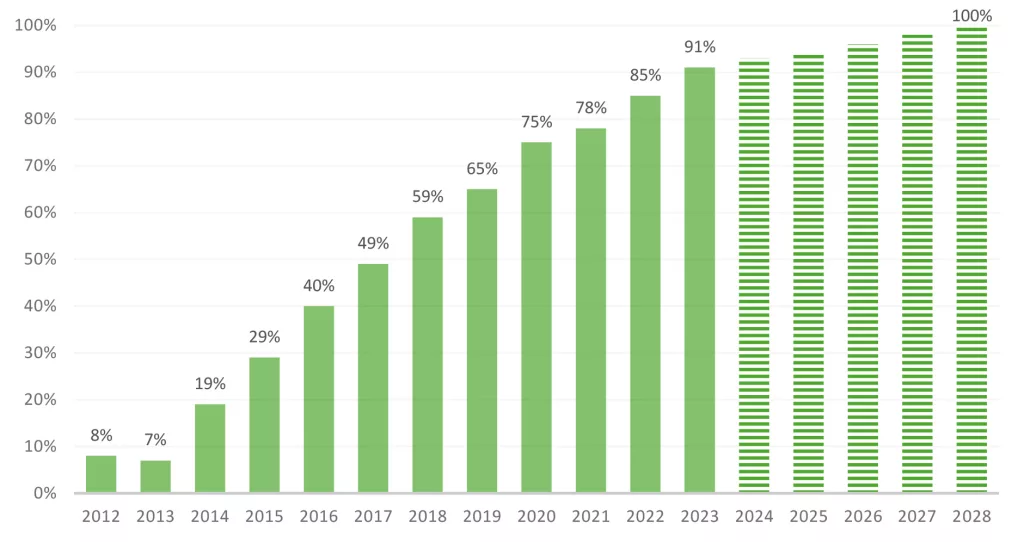
Development of the Île-de-France region’s outstanding green and responsible debt.
The 2023 sustainable bond reporting will be published before the end of this year.
This high school project (bottom left illustration) aims to improve the quality of existing infrastructure and equipment for secondary education. It adheres to the highest standards of energy efficiency, reducing the environmental footprint, improving water-management, landscaping, and interior air quality.
The visual and acoustic comfort of users was improved by modelling of lighting and noise levels based on the materials used.
See for more information on how loans are used.
You may have an interest in also reading…
European Court of Justice: Looking for the Digital Utopia
In a textbook case of be-careful-what-you-wish-for, frustrated lobbyists plying their trade in Brussels on behalf of Google, Microsoft, and other
Angela Merkel: Leader of the Free World
Playing nice gets results. Just ask Angela Merkel who became the undisputed leader of the free world after the US
Werner Hoyer, President of the European Investment Bank (EIB): A Mostly Unseen Hand
In late-December, President Werner Hoyer of the European Investment Bank shared his experiences and insights with CFI.co. He leads an
















































































